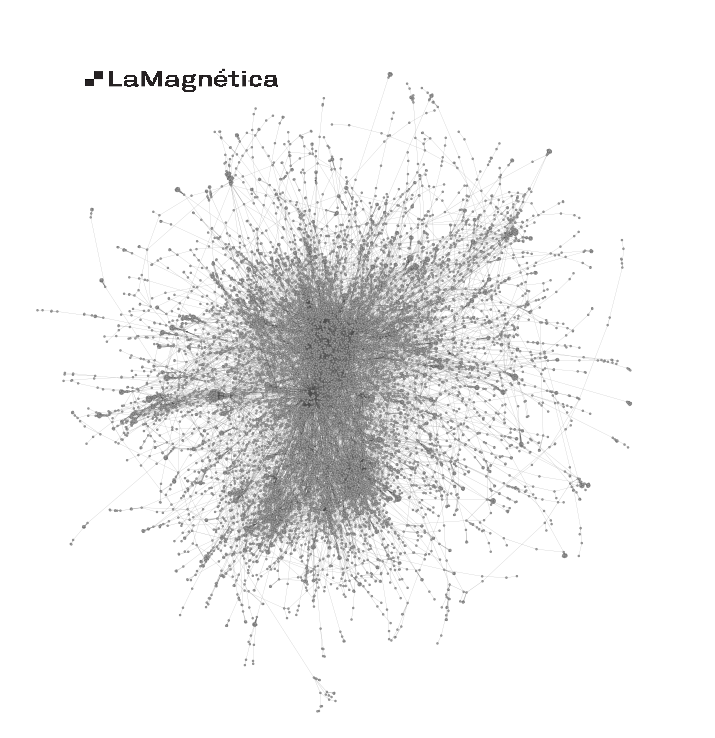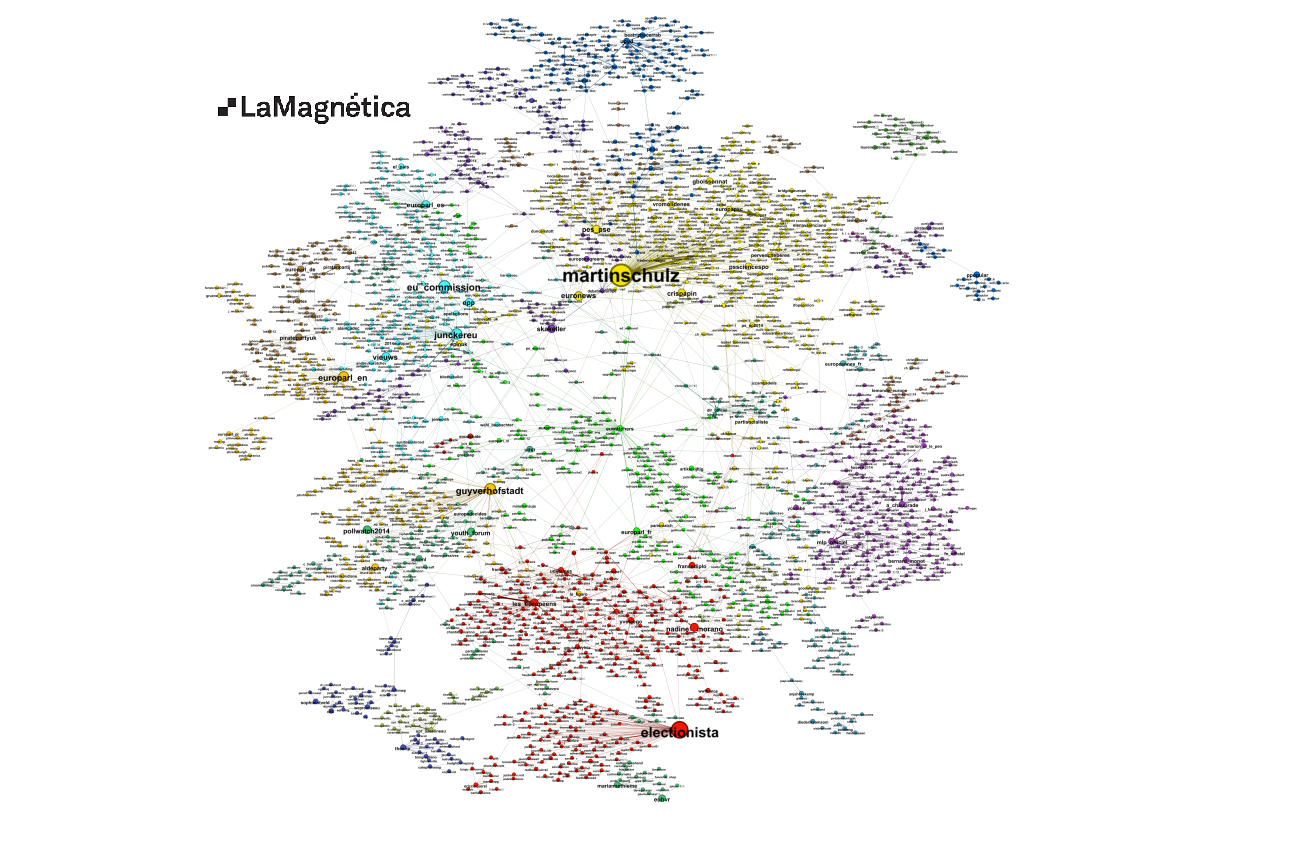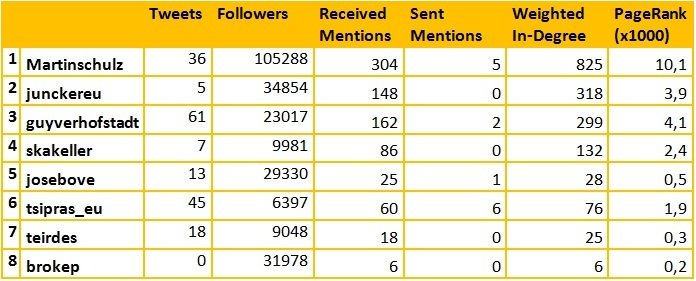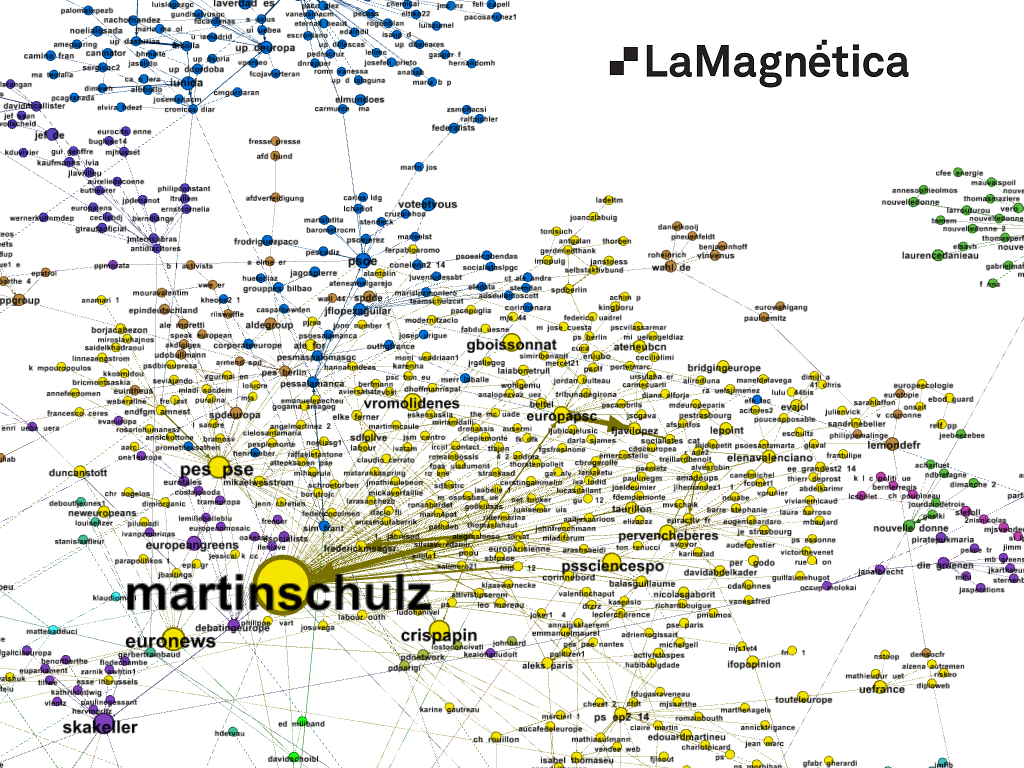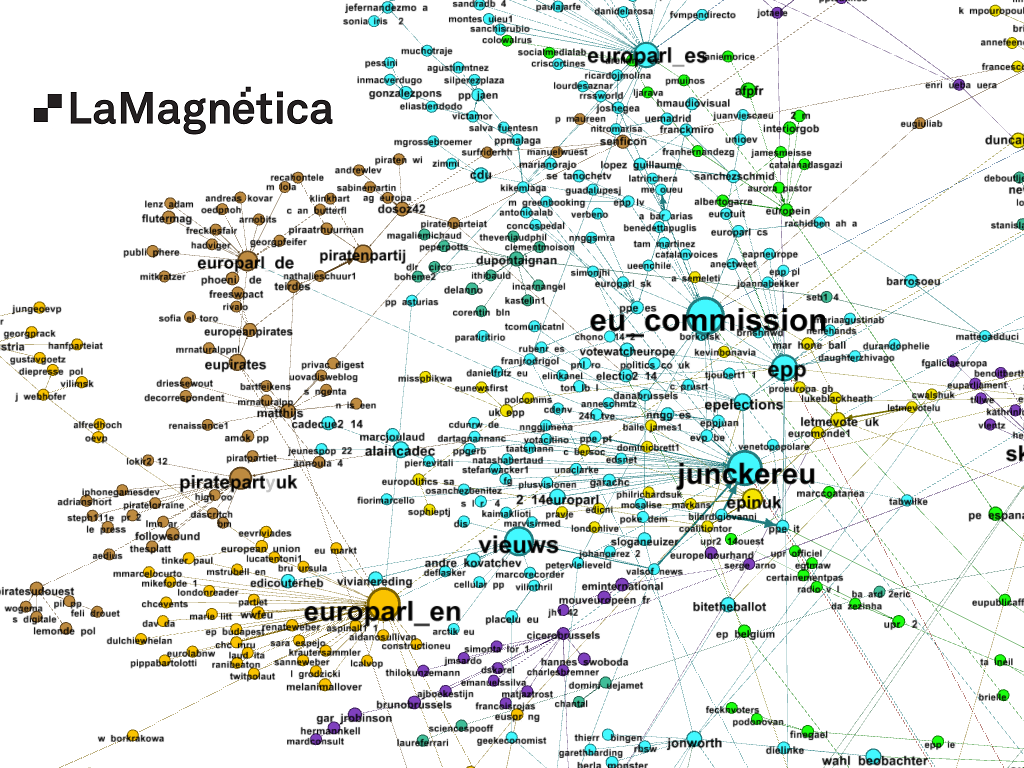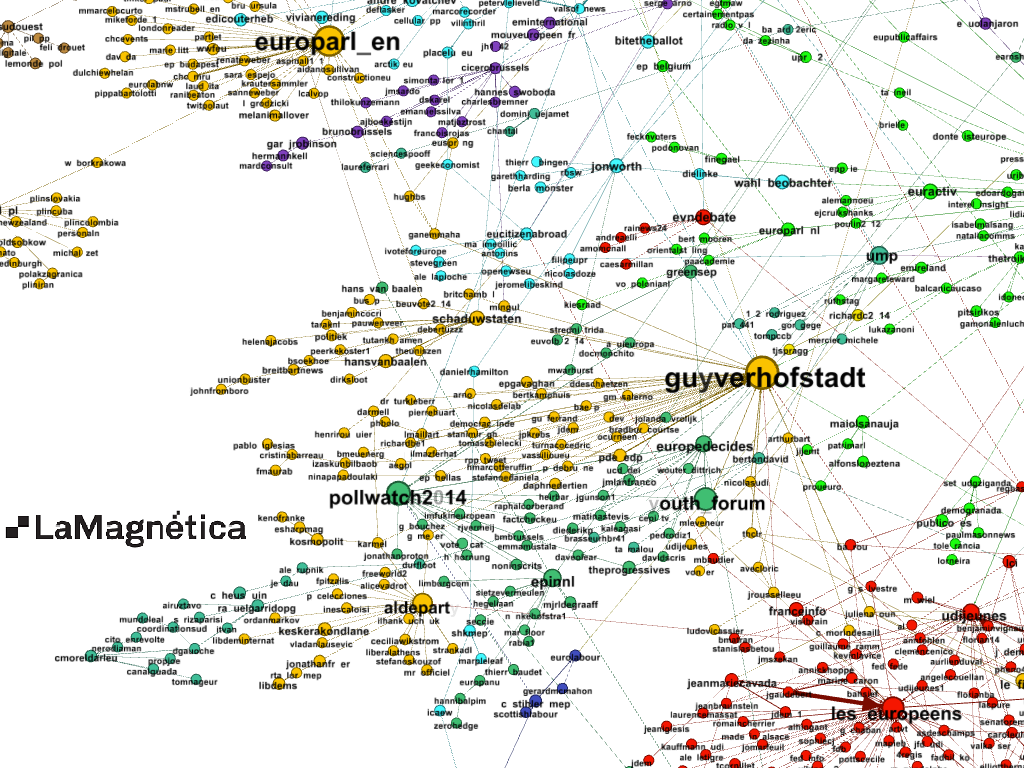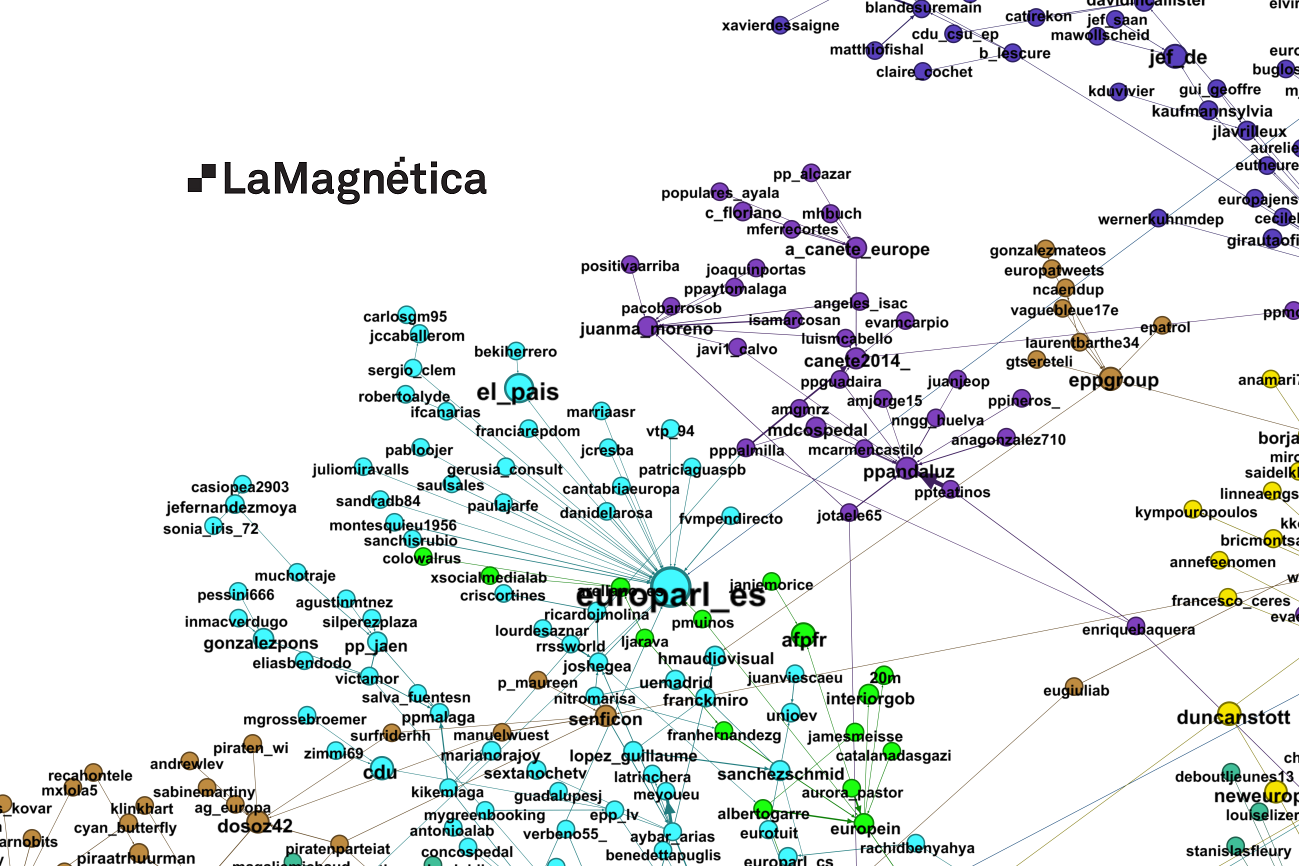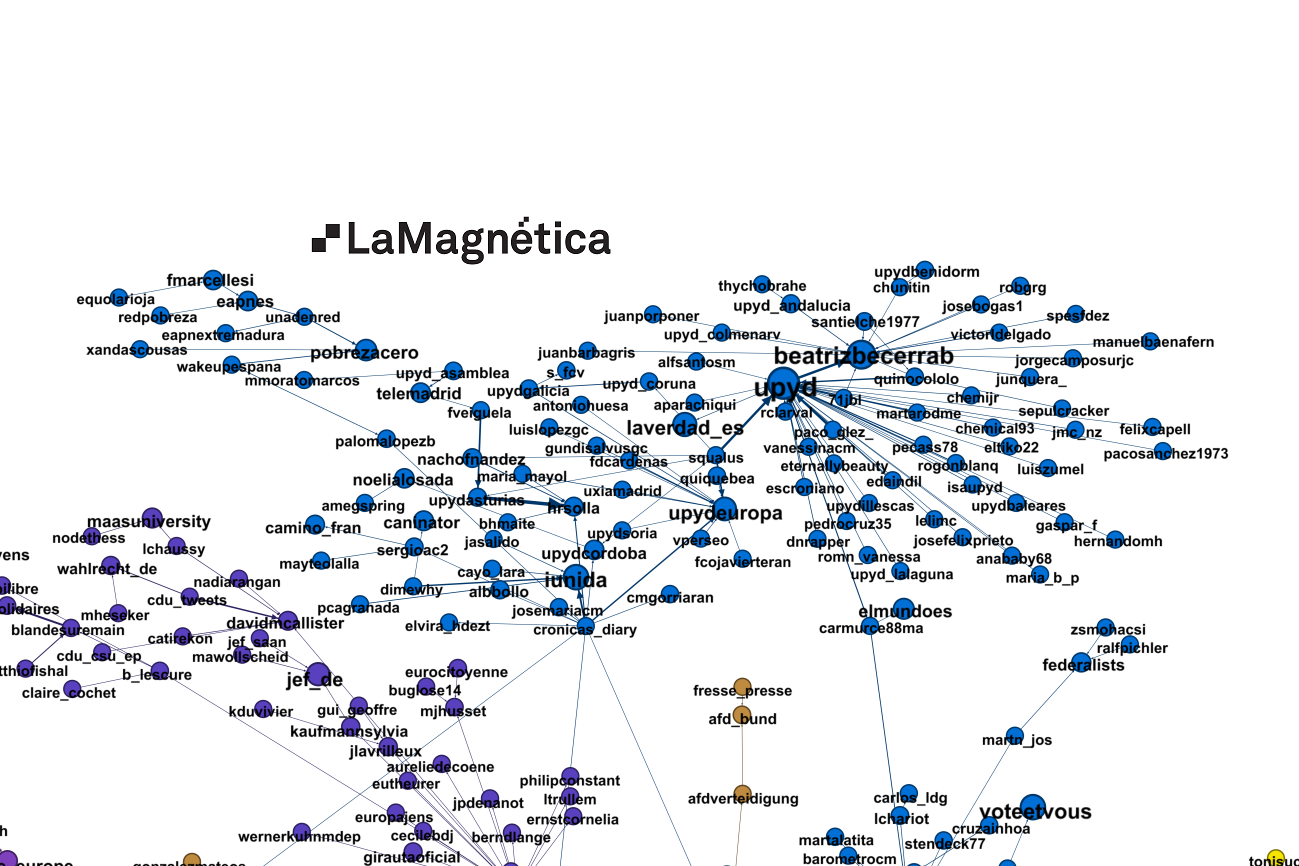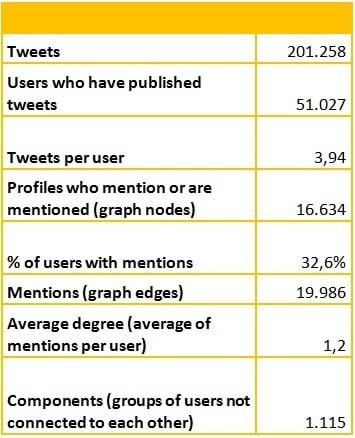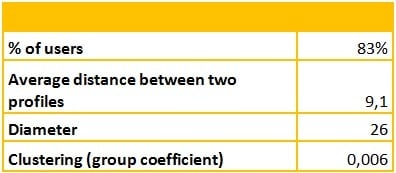From April the 25th we are monitoring the European Elections’ official hashtag on Twitter: #EP2014. In this article we want to show the analysis’ results of the published tweets until May the 9th, day when the electoral campaign started. The main difference with previous editions is that, this time, the process for electing the president of the European Commission is more transparent and almost all the political parties have made public which candidate are they going to support.
On these weeks of pre-campaign, we have collected more than 200.000 tweets with an approximate of 20.000 mentions, published by 51.027 users. When the campaign is about to end, we will publish a new post with the final results.
We have focused our study on Twitter users’ interactions (politicians, parties, journalists, citizens). This is what we are looking for:
- To know if politicians are taking a true advantage of the communicative potential that social networks have. This means if they are using Twitter as a bidirectional communication channel with users or if they are using it to publish their slogans and wait for others to spread the word.
- Are they talking only with their followers, or are they trying to communicate with a wider range of users?
- Knowing if candidates are talking to each other.
- Which is the conversation structure? To do that we will analyze the main structured groups or communities talking about the European Elections. A very important datum of this structure is determined by:
- Country
- Ideology, depending on the groups that are part of the European Parliament; or
- Party
- Most active and influence users.
We have drawn a graph with all the profiles that have sent or received mentions in tweets with the hashtag #EP2014. Each point or node belongs to a Twitter user, and arrows belong to mentions between two users. Retweets and MTs are included in the mentions.
The conversation is structured in more than 1.000 groups not connected to each other so far. As the campaign advances, some of these groups will be getting connected to the main group.
The main group (called giant component on graph’s theory and social network analysis) has over 80% of the users. We are going to focus on it, as long as it’s in this group where most interesting phenomena occur. All candidates, except Amelia Andersdotter and Peter Sunde, from the Pirate Party, are part of this main component that has the following aspect:
The core is too dense to be properly visualized on a computer screen. This is why we are erasing the less relevant connections on the image. (On our calculations we are still using them all)
And so we get a proper visualization, where we have highlighted with different colors clusters and user communities. This is, groups of users with lots of connections within the group, but fewer connections with other group profiles. On the downloadable high-resolution image, we can see into detail the groups and their main profiles.
One of the first things that draw attention is that this is a graph without a central group surrounded by some peripheral groups. We have a lot of different sized groups, but none of them occupies a relevant central position connecting the other ones. This is a first conclusion of social network’s usage on politics.
THE CANDIDATES
The second thing that draws attention is the relevance of the European Parliament President’s profile and candidate of the socialist group for the Commission Presidency, Martin Schulz, who is making an important advertising investment on Twitter and has more than 105.000 followers.
On the other hand, the candidate of the European People’s Party, Jean-Claude Juncker, occupies a more modest position.
In this table we are presenting some indicators of the main candidates’ profiles. They are grouped according to their centrality on the conversation.
Martin Schulz leads the rank in each one of the aspects, and the conservative candidate Jean-Claude Juncker and the liberal one, Guy Verhofstadt, are almost tie in a second and third position. The next three candidates are quite far away and their influence takes place just on specific circles. It is not a surprise, taking into account that these are the candidates for the European Green Party, Ska Keller and the eccentric and populist José Bové, and the candidate for the European Left Party, Alexis Tsipras.
It is quite interesting the scarce number of mentions realized by the candidates during this period of analysis, even more if we take into account that we are including mentions to their political parties’ user profiles. Right now they seem to be more comfortable exhorting on a pedestal than talking to their citizens, journalists and politicians. We’ll have to see if this situation changes during the campaign.
Now we are going to focus on taking a deeper look into some especially relevant zones of the graph. We start with Martin Schulz’ environment, that include socialist politicians from different countries, like Elena Valenciano from PSOE and Javi López, from PSC, very connected with the European Socialist Party main profile (both of them are at the right part of the yellow group). Also PSOE and López Aguilar (both in blue) are very connected (you can find them on the upper part of the yellow group).
Martin Schulz is also connected with the Green Party candidate, and other profiles related to the Greens (in purple), but mainly because of their mentions.
The surroundings of the conservative candidate and the liberal one are less dense.
The Spanish Parties
We have seen that PSOE has different profiles integrated on the groups of users surrounding Martin Schulz. But the PP is a curious phenomenon. It has different profiles in groups not connected to each other.
- It has one on the right part of the graph, in blue (can be seen on the high-resolution image).
- Other groups (on the left part of the graph, light blue profiles, upon UE’s profile) are related with the European Parliament Spanish profile. This group includes González Pons, PP Jaén and PP Málaga, among other ones.
- A last group, close to the previous one, that includes profiles like the PP Andaluz, Cospedal and PP’s candidate, Arias Cañete.
The groups surrounding IU and UPyD are quite close, on the upper part of the graph. The presence of nationalist profiles is minimal.
The main difference is that PSOE is more integrated on the European socialist conversation, while other Spanish parties are less connected with their European colleagues.
In France we can observe a similar attitude in the main groups (in red, on the bottom part, and purple on the right part), mostly composed by French profiles. Like in Spain, French socialists are much integrated with socialist profiles all over Europe than other parties with their respective European colleagues. Italy’s presence is lesser than the Spanish, French or German one.
SOME FACTS ABOUT THE ANALYZED GROUP OF TWEETS
To sum-up, we want to show a table with some data of the tweets collected so far, and analyzed on this article:
And on the main component:
These pieces of data tell us different things about the kind of conversation that is taking place on Twitter regarding the European Elections:
- The number of mentions is quite low. Less than 10% of the tweets include mentions. In the majority of analysis that we’ve done, we found clearly superior percentages.
- There are few repeated connections. This datum is going to be clearer at the end of the campaign, and we will see if has increased significantly or not.
- There are a wide number of components not connected to each other, but most of them are irrelevant and are formed by few users, most of the times by 2 or 3. However, there are some groups that do have some relevance, like the ones that include the candidates from the Pirate Party, and some other national clusters not connected to the main group. Some of these groups will join the main component when we add the tweets published during the campaign.
- When we were introducing this graph, we were highlighting that none of the groups has a central position that ease the contacts between the rest of the groups. This can be seen on the graph’s diameter (26) and the average distance between 2 profiles (9,1), whereas in other graphs of similar size we see values of 10-15 and 4-7, respectively. This means that the political conversation is taking place in groups loosely connected to each other, meaning that:
- There are few conversations between profiles from different countries. The only exception is the Socialist Group.
- There are few conversations between different ideology profiles.

